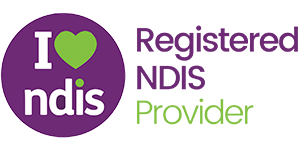What Is NDIS?
The National Disability Insurance Scheme (NDIS) is a national program initiated by the Australian government to provide support and assistance to NDIS participants. The NDIS aims to give its participants more control over their lives by assisting them with daily living, therapies, and exceptional support to overcome specific disorders.The goal of NDIS is to develop independence and live a better life with maximum physical and mental wellbeing. The NDIS works by providing funding to eligible individuals based on their assessed needs and goals, which they can then use to access support and services through an NDIS plan that best meets their needs.
How Physiotherapy Promotes Wellbeing?
Physiotherapy provides numerous benefits for physical and mental health, including:- Pain relief and management for arthritis, back pain, etc.
- Improved movement and flexibility.
- Increased strength, stability, and coordination.
- Faster recovery from surgery or injury.
- Assistance with pre and post-operative conditions.
- Relief from chronic diseases such as osteoporosis.
- Enhanced physical function and overall quality of life.
- Prevention of further pain and injuries.
- Reduced stress.
Types of NDIS physiotherapy
For NDIS participants, accessing physiotherapy must be discussed in your NDIS plans with your plan manager, support coordinator or NDIS provider. Following are some types of physiotherapies that can be covered by the NDIS under the guidance of professional and trained physiotherapists.Stretching exercises
It is to improve flexibility and range of motion in muscles and joints.Strength training exercise
This is to build muscle strength, improve stability, and support mobility. Exercises include using some weights.Balance exercises
Balance exercises improve balance, reduce the risk of falls, and support the physical activity of a participant.Cardiovascular exercises
Exercises include walking and light jogging to improve cardiovascular health and endurance, as well as support mobility.Coordination and control exercises
These provided betterment of coordination, reaction time, and overall functionality.Hydrotherapy
It uses the resistance and buoyancy of water to improve mobility and reduce pain and stress on joints.Assistive technology
This is included in the core support budget of the NDIS. It uses wheelchairs, walkers, or crutches to improve mobility and independence.Final Thoughts
While it’s crucial to include exercise in your daily routine, you should only engage in physical activities appropriate for your skill level and health. This can be discussed with your physician and carer.
Exercising under the supervision and guidance of your carer is highly recommended as it provides a sense of security and certainty, especially to participants who are worried about falling or injuring themselves, and considerably prevents the danger of an accident or injury.
NDIS physiotherapy is a great way to try and improve your mobility and other physical impairments. Not only does NDIS focus on assisting in coping with disabilities, but it also provides support for prevention. At EnableU, we are registered NDIS support providers and offer such support across Australia to help participants feel independent.







